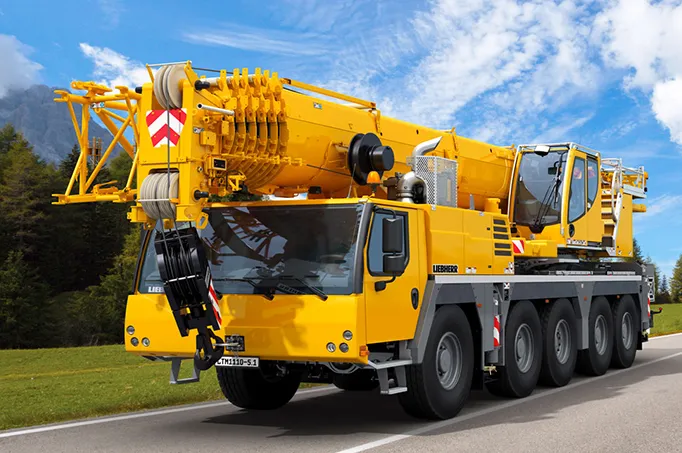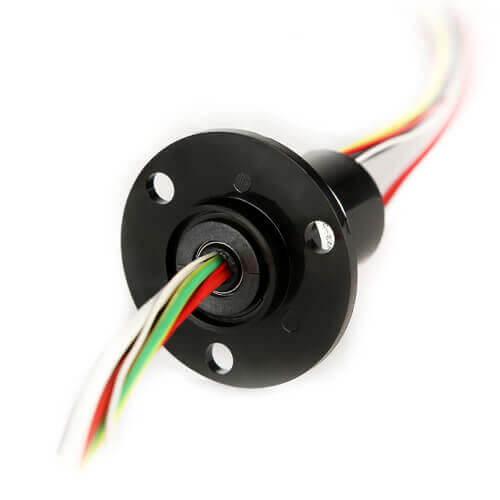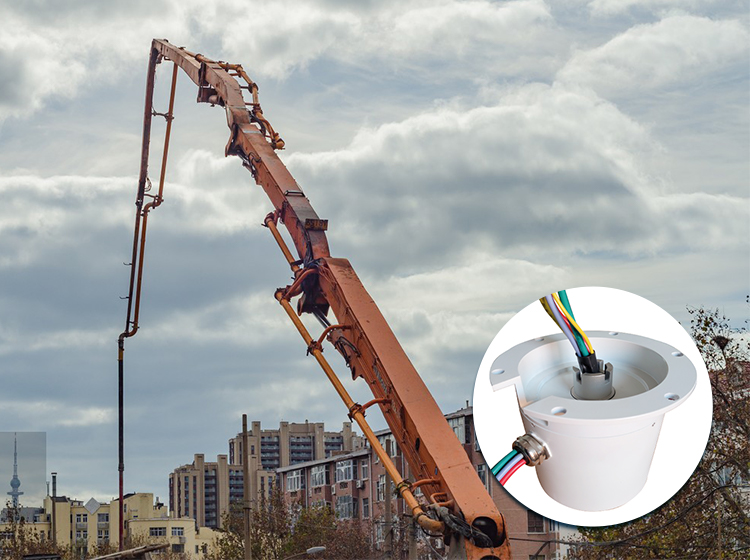In this article, we will explore how slip ring applications in pile drivers and their integral role in enhancing both efficiency and versatility. We’ll examine the benefits, address key user concerns, and discuss emerging trends in pile driver slip ring technology. You’ll also learn how to select the perfect slip ring for your pile driver application.
Introduction to Slip Ring Application in Pile Drivers
In the vast field of construction, pile drivers have been an irreplaceable asset for ages. Pile drivers are specialized machines, designed for one primary purpose – driving piles into the soil to provide foundational support for various structures ranging from buildings to bridges and beyond. The simple yet powerful premise of its operation has made it a cornerstone within the construction industry. This is where efficiency and reliability become crucial, and that’s where the application of slip rings enters the equation.
The slip ring, while not immediately recognizable, is a vital cog in any rotating electrical system and by extension, in pile drivers. By design, a slip ring is an electromechanical device that facilitates the transmission of power and electrical signals from a stationary component to a rotating component. In the context of pile drivers, slip rings provide rotary unions with constant connectivity, ensuring there’s no interruption in power or data transmission – a feature that is invaluable whilst the pile driver is in operation.
The aim of this article is multifaceted. By demystifying the application of slip rings in pile drivers, we seek to discuss the key benefits of this integration in enhancing the efficiency and versatility of operations. Additionally, we understand that making any operational changes, especially those that incorporate new technologies or equipment, often comes with concerns and uncertainties. Hence, we also aim to shed light on these concerns, offering insights and recommendations to help users make informed decisions.
Stay with us as we delve deeper into the world of pile drivers, slip rings, and how these two distinct devices collaboratively revolutionize the efficiency and versatility of construction operations.

Basics of Slip Rings in Pile Drivers
Before we delve into the benefits and application of slip rings in pile drivers, let’s first establish a solid understanding of what these components are and what they’re responsible for in a system.
At their core, slip rings are electromechanical devices uniquely designed to transmit power and signals between stationary and rotating components, effectively bridging the configuration limits imposed by rotating interfaces. Imagine these as a sort of electrical ‘turntable’ that ensures constant, unrestricted communication while components revolve or rotate. Whether it’s electrical power, sensor signals, or data, the slip ring ensures nothing is lost mid-rotation.
So, where does the humble slip ring fit within the mechanical giant that is a pile driver? Imagine a revolving door. As one side moves, the other continues to maintain a static position relative to the reference point – this is akin to the operation of pile drivers. The pile driver’s rotating parts need continuous electrical power and data transmission to function efficiently, and this is facilitated by slip rings. While the pile driver’s hammer or weight rotates to drive piles into the ground, the slip ring ensures there’s no disruption in power supply or signal transmission. This smooth transfer of power and signal, even during rotation, is crucial for maintaining the effective operation of pile drivers.
There are different types of slip rings designed specifically for various applications, including capsule slip rings, pancake slip rings, and drum slip rings, to name just a few. When it comes to pile drivers, the choice of slip ring will depend largely on the specifics of the application. Various factors come into play, such as the operating environment, rotation speed, current and voltage requirements, and the nature of signal transmission. Therefore, it’s important to select a type of slip ring that aligns with these parameters and meets the particular demands of the pile driver application.
The beauty of slip rings lies in their ability to seamlessly integrate within rotary systems like the pile driver. They’re an unassuming, yet integral piece to improving efficiency, reliability, and versatility. In the subsequent sections, we will expand on these benefits and how they can revolutionize your pile-driving operations.

Key Benefits of Slip Ring Application in Pile Drivers
Upon understanding the function and application of slip rings in pile drivers, one begins to realize the enormous utility and benefits this coupling brings to the forefront of pile-driving operations.
One of the most significant advantages is the uninterrupted transmission of power and data during pile driver rotation. Imagine the complications that could arise if pile drivers were to lose electrical connectivity each time they revolved or rotated. Not only would this be impracticable but it would also interfere with the efficiency and precision of the operations. Slip rings bridge this gap, ensuring a constant electrical connection and seamless transition of power and signals between the stationary and rotating parts of pile drivers.
Then there’s the question of overall efficiency. Any reduction in energy loss or interference in operations can contribute significantly to the overall efficiency of pile drivers. By ensuring a flawless flow of power and data, slip rings aid in reducing wasted energy and streamlining operations. This translates into faster, more efficient pile-driving processes and, ultimately, more successful and timely completion of construction projects.
The applications of pile drivers vary greatly, depending on the nature of the project or the geological conditions. The use of slip rings introduces a level of versatility that can adapt to these varying situations. Whether your project requires a simple driving operation or a more complex dynamic compaction technique, slip rings contribute to the effectiveness of the pile driver in various applications by ensuring consistent electrical connectivity.
Last but certainly not least, the integration of slip rings can result in a substantial reduction in the downtime associated with maintenance and repairs. Without a slip ring, the risks of wire twisting, snapping, and subsequent electrical shorting increase with each rotation, leading to more frequent maintenance requirements. Slip rings are designed to handle rotation stress, reducing the risk of such electrical issues. Therefore, less time will be spent on maintenance and repairs, leading to an increase in operational uptime.
In a nutshell, the application of slip rings in pile drivers enhances the machines’ operational parameters, paving the way for a more effective, efficient, and diverse approach to foundational pile driving.
User Concerns about Slip Ring Integration in Pile Drivers
While the benefits of slip ring integration in pile drivers can be invariably appealing, it is equally important to acknowledge and address the concerns that potential users may have. These concerns often revolve around five currents of thought – the cost of investment, maintenance, adaptability, durability, and training.
Firstly, there is the concern about the cost and return on investment. Notwithstanding the highlights of enhanced operational efficiency and versatility, the thought of reconfiguring existing machinery to integrate slip rings may appear daunting in terms of financial investment. Potential users may worry about the upfront costs, as well as the return on such an investment and the impacts on operational costs as a whole.
Next, there’s the question of maintenance. Whilst slip rings potentially reduce the frequency of maintenance and repairs, they do introduce additional components to the machinery that may have their maintenance requirements and procedures. Users might be concerned about the complexity of these added requirements, and the cost and time needed to uphold them.
Adaptability is also a legitimate concern. Given that the pile drivers may already have established electrical mechanisms, users will be wondering about the compatibility of slip rings with their existing machinery. Moreover, the ease, or lack thereof, when integrating slip rings can be a cause for reservation.
Durability in the face of challenging conditions is also paramount. Pile-driving operations often take place in harsh and unforgiving environments. As such, users may be concerned about the robustness of slip rings and their performance under such demanding conditions.
Lastly, the introduction of slip rings necessitates some level of training for the operation and maintenance personnel. Users may be apprehensive about the time, effort, and cost involved in bringing their workforce up to speed with the new components.
While these concerns are valid, advances in slip ring technology and its application in pile drivers are geared towards addressing these issues. The following sections will further explore and alleviate these concerns, helping users make informed decisions.
Slip Ring Application in Pile Drivers: Addressing User Concerns
Guiding our users through the process of integrating slip rings within their pile driver operations while addressing their concerns is an essential step.
On the subject of cost-to-benefit ratios, the integration of slip rings undeniably requires an initial investment. However, the key here is to evaluate this cost as an investment rather than an expense. Additional costs are quickly offset by the increased efficiency, reduced downtime, and expanded versatility in operations. Enhanced performance and reduced maintenance intervals equate to faster project completion and consequently, higher returns on investment. Users can gain more value out of their pile driver operations in the long run well worth the cost of the initial investment.
Selecting appropriate slip ring types for specific applications can alleviate concerns about adaptability and durability. Slip rings are not a one-size-fits-all solution, but their variety is a strength rather than a limitation. Relying on experts or manufacturers to guide you will ensure the selection of the best-suited slip ring designed to meet the unique demands of individual pile driver machines. Furthermore, multiple slip ring versions are specifically built to withstand harsh or challenging environments, addressing worries about durability under demanding conditions.
Regarding training, users need to acknowledge that any change or addition to machinery often necessitates some level of learning. To mitigate this, most slip ring manufacturers provide comprehensive training resources ranging from video tutorials to manuals and even on-site training. The complexity of slip ring operation and maintenance finds balance with these educational resources. In addition, the training process can be seen as an added opportunity to upskill the staff, increasing their competency and familiarity with the latest technology.
In conclusion, while concerns about the integration of slip rings in pile drivers are understandable, they can be effectively addressed. An open dialogue with experts, choosing the right slip ring, and making use of available training resources will guide users toward a more rewarding pile-driving operation.
Emerging Trends and Innovations in Pile Driver Slip Rings
As we progress into the future, the technological landscape continues to shift and evolve across industries, and the realm of slip rings for pile drivers is no exception. The industry is witnessing new trends and innovations aimed at enhancing performance, improving data transmission, and contributing to sustainable practices.
One significant development is the emergence of smart slip rings, offering real-time monitoring and predictive maintenance capabilities. These innovative devices leverage the power of artificial intelligence and machine learning to provide insights into slip ring functionality. This feature is a considerable step towards preempting potential issues, scheduling proactive maintenance, and optimizing the longevity and performance of the pile drivers.
Further enhancing the capability of slip rings is the improvement in data transmission. Innovations are surfacing that support greater broadband and data rates, enabling the transfer of larger amounts of data in shorter times, all while maintaining signal integrity. This rapid and high-capacity transmission is crucial when it comes to advanced pile-driving operations that rely heavily on data for precision and efficiency.
In response to user concerns regarding durability, manufacturers are innovatively utilizing advanced materials in the construction of slip rings. These materials, such as specialized alloys or composite materials, are designed to increase durability and reduce wear, even under strenuous conditions. This results in slip rings that are much more robust and have a longer lifespan.
Lastly, an essential trend in today’s increasingly eco-conscious world is the rise of energy-efficient slip ring designs. Manufacturers are focusing on creating designs that are not only effective but also contribute to environmental sustainability. These energy-efficient designs seek to reduce energy loss, decrease CO2 emissions, and promote overall operational efficiency.
Through these innovations, the industry is continually adapting to meet the evolving needs of pile-driving operations. Slip rings are not only evolving with the times but are reshaping and enhancing the capabilities of pile drivers, providing users with an increasingly beneficial, efficient, and sustainable solution.
Choosing the Right Slip Ring for Pile Driver Applications
Choosing the correct slip ring is a pivotal decision in the successful integration of this technology into existing pile driver operations. The choice of slip ring can influence factors such as efficiency, longevity, and ease of maintenance.
Foremost, there are key factors to consider when selecting a slip ring. It is essential to assess the electrical and mechanical requirements, such as the number of circuits, current and voltage values, rotating speed, and the operational environment. Additionally, the data and signal requirements, such as data transmission rate and type, should be clearly understood. Understanding these parameters helps in aligning the user requirements with the correct slip ring specifications, ensuring optimal performance.
It is equally crucial to work with reputable slip ring manufacturers. A reputable manufacturer can provide reliable, durable, and high-performing slip rings. Furthermore, they can offer expert advice and suggestions, which can be invaluable for users new to slip ring technology. Established manufacturers also stand by their products, offering warranties and support that can bring peace of mind to users.
Moreover, many manufacturers offer customization possibilities. Customization allows for effective and seamless integration of the slip ring into the existing machinery, making an otherwise complex process significantly more simplified. Users can specify their slip ring requirements, from electrical and mechanical aspects to form factor and mounting options, resulting in a tailored solution that fits the user’s exact needs.
Choosing the right slip ring is a nuanced process that should be approached with consideration and expert input. It is a process that, when thoughtfully executed, can lead to improved pile driver operations and long-term efficiency benefits.
Conclusion
Considering the integration of slip rings in pile drivers can greatly improve efficiency, versatility, and durability. Addressing user concerns and staying informed about emerging trends in slip ring technology will enable users to make informed decisions and potentially transform their pile driver operations.
FAQs about Slip Ring Application in Pile Drivers
Slip rings can significantly enhance the efficiency and functionality of pile drivers, but they might also raise some questions among potential users. Here are some of the most frequently asked questions about slip ring application in pile drivers, presented in Q&A format.
Q: What are the advantages of applying slip rings to pile drivers?
A: Slip rings offer numerous benefits such as enabling continuous 360-degree rotation, reducing machine downtime due to wear, and increasing operational efficiency. They also help in enhancing data and signal transmission, allowing for more precise and smooth pile-driving operations.
Q: Is the integration of slip rings in our existing pile drivers a complicated process?
A: The process of integrating slip rings can vary based on the machinery and the type of slip ring used. However, reputable manufacturers usually offer comprehensive guidance, and in some cases, even on-site support, to make the process seamless.
Q: How does the slip ring deal with harsh operative conditions?
A: Slip rings are designed and built to operate efficiently even under challenging conditions. Many slip rings feature robust designs and are made from materials that can withstand harsh environments. Certain models are even designed especially for use in exceptionally rigorous conditions.
Q: What kind of maintenance do slip rings require?
A: The maintenance required for slip rings depends on their type, model, and operational conditions. However, most slip rings are designed to be low maintenance. Regular visual inspections and routine cleaning are usually sufficient. Additionally, certain innovative models, especially those equipped with smart features, offer real-time monitoring and predictive maintenance.
Q: How can we ensure we’re selecting the right slip ring for our pile driver machinery?
A: Selecting the right slip ring involves considering various factors such as electrical and mechanical requirements, operational conditions, and data transmission needs. It is also beneficial to consult with slip ring manufacturers or experts to understand the best options for your specific application.
See What We Can Do

